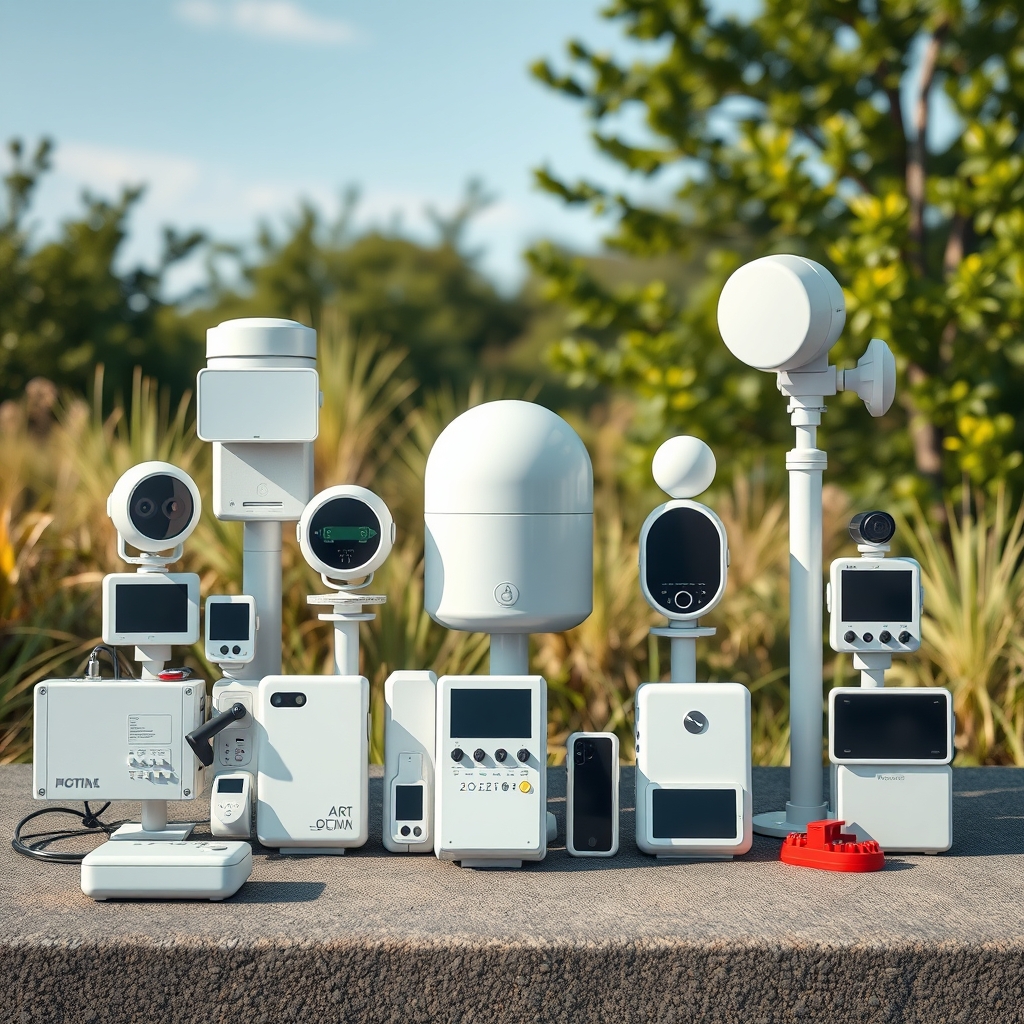Top Air Quality Index API alternatives in 2025

Top Air Quality Index API Alternatives in 2025
As the demand for accurate air quality data continues to rise, developers are seeking reliable APIs to integrate into their applications. The Air Quality Index API has been a popular choice, but there are several alternatives that offer unique features and capabilities. In this blog post, we will explore the best alternatives to the Air Quality Index API in 2025, detailing their key features, pricing, pros and cons, ideal use cases, and how they differ from the Air Quality Index API.
1. Air Quality Index API (Alternative)
The Air Quality Index API provides a real-time air quality health index on a scale of 1 to 10. This API is based on three-hour averages of ozone, nitrogen dioxide, and fine particulate matter concentrations, making it a valuable tool for monitoring air quality.
Key Features and Capabilities
This API offers several key features:
- Air Quality Health Index: This feature returns the official air quality health index (AQHI) based on key parameters. The AQHI is calculated from three-hour average concentrations of ground-level ozone (O3), nitrogen dioxide (NO2), and fine particulate matter (PM2.5). O3 and NO2 are measured in parts per billion (ppb), while PM2.5 is measured in micrograms per cubic meter (ug/m3).
{"carbon":"3 kg co2","success":true}This response indicates the carbon equivalent in kilograms, providing a clear understanding of the air quality impact.
Pros and Cons Compared to Air Quality Index API
Pros:
- Comprehensive CO2 calculations for various travel modes.
- Real-time health index provides immediate insights into air quality.
Cons:
- Limited geographic coverage compared to some competitors.
- Data may not be as granular as other APIs.
Ideal Use Cases
This API is ideal for public health monitoring, environmental regulation enforcement, and mobile app integration for real-time air quality alerts.
How It Differs from Air Quality Index API
While both APIs provide air quality data, this alternative focuses more on CO2 emissions and their impact on health, offering a broader perspective on environmental factors.
2. Weather by City API
The Weather by City API is an indispensable tool that allows users to access real-time and forecast weather information. This API enhances decision-making, planning, and safety measures by providing comprehensive weather data.
Key Features and Capabilities
The Weather by City API includes the following features:
- Get Weather: This feature allows users to retrieve weather data by entering the name of a city. The API provides real-time weather data, including temperature, humidity, wind speed, air quality, and forecasts.
{"success":true,"data":{"city":"Bandra Kurla Complex, Maharashtra","current_weather":"Haze","temp":"31","expected_temp":"Day34 Night30","insight_heading":"Rain","insight_description":"Rain ending around 11:30 pm.","wind":" 14km/h","humidity":"82%","visibility":"3.22 km","uv_index":"0 of 11","aqi":"56","aqi_remark":"Satisfactory","aqi_description":"May cause minor breathing discomfort to sensitive people.","last_update":"21:44 IST","bg_image":"https://s.w-x.co/WeatherImages_Web/WeatherImage_Haze-night_2.jpg?crop=16:9&width=800&format=pjpg&auto=webp&quality=70"}}This response provides a comprehensive overview of the current weather conditions, including air quality index (AQI) details.
Pros and Cons Compared to Air Quality Index API
Pros:
- Combines weather and air quality data in one API.
- Easy integration for developers with well-documented resources.
Cons:
- Less focus on historical air quality data.
- May not provide as detailed air quality metrics as specialized APIs.
Ideal Use Cases
This API is perfect for applications that require real-time weather updates, such as travel apps, event planning tools, and outdoor activity trackers.
How It Differs from Air Quality Index API
The Weather by City API integrates weather and air quality data, making it a versatile option for developers looking for a comprehensive solution, while the Air Quality Index API focuses solely on air quality metrics.
3. UV Index Real-Time and Forecasted API
The UV Index Real-Time and Forecasted API retrieves the UV index for any location in real-time and provides forecasts. This API is essential for applications that need to inform users about UV exposure levels.
Key Features and Capabilities
This API offers the following features:
- UV Index Real-Time: Users can obtain the current UV index by passing the latitude and longitude of the desired location. All times are expressed in UTC.
{"result":{"uv":8.8844,"uv_time":"2022-10-12T18:18:18.886Z","uv_max":9.3573,"uv_max_time":"2022-10-12T17:35:56.449Z","ozone":285.7,"ozone_time":"2022-06-02T12:05:13.749Z","safe_exposure_time":{"st1":19,"st2":23,"st3":30,"st4":38,"st5":60,"st6":113},"sun_info":{"sun_times":{"solarNoon":"2022-10-12T17:35:56.449Z","nadir":"2022-10-12T05:35:56.449Z","sunrise":"2022-10-12T11:43:37.526Z","sunset":"2022-10-12T23:28:15.371Z","sunriseEnd":"2022-10-12T11:45:55.477Z","sunsetStart":"2022-10-12T23:25:57.421Z","dawn":"2022-10-12T11:21:23.292Z","dusk":"2022-10-12T23:50:29.605Z","nightEnd":"2022-10-12T10:29:59.183Z","night":"2022-10-13T00:41:53.714Z","goldenHourEnd":"2022-10-12T12:13:11.709Z","goldenHour":"2022-10-12T22:58:41.188Z"},"sun_position":{"azimuth":0.37898939830176526,"altitude":1.0469926114702273}}}}This response provides detailed information about the current UV index, maximum UV index, ozone levels, and sun information, which is crucial for sun safety.
{"result":[{"uv":0,"uv_time":"2024-07-07T11:14:24.387Z","sun_position":{"azimuth":-1.9979482638770827,"altitude":-0.011426987157720857}},{"uv":0.3389,"uv_time":"2024-07-07T12:14:24.387Z","sun_position":{"azimuth":-1.9143489203019375,"altitude":0.21554058846390795}},{"uv":1.4717,"uv_time":"2024-07-07T13:14:24.387Z","sun_position":{"azimuth":-1.847156646774205,"altitude":0.4487659395121431}},{"uv":3.8922,"uv_time":"2024-07-07T14:14:24.387Z","sun_position":{"azimuth":-1.7927337294902674,"altitude":0.6860918389195284}},{"uv":7.126,"uv_time":"2024-07-07T15:14:24.387Z","sun_position":{"azimuth":-1.7508148681222828,"altitude":0.9260641118003088}},{"uv":10.0693,"uv_time":"2024-07-07T16:14:24.387Z","sun_position":{"azimuth":-1.729411106267307,"altitude":1.1675313850872888}},{"uv":12.2284,"uv_time":"2024-07-07T17:14:24.387Z","sun_position":{"azimuth":-1.7991156886324384,"altitude":1.4085887791687823}},{"uv":12.5479,"uv_time":"2024-07-07T18:14:24.387Z","sun_position":{"azimuth":1.9471350357388102,"altitude":1.649646172250235}}]}This response provides hourly forecasts for the UV index, allowing users to plan their outdoor activities accordingly.
Pros and Cons Compared to Air Quality Index API
Pros:
- Specialized focus on UV exposure, which is crucial for health and safety.
- Provides both real-time and forecasted data, enhancing user awareness.
Cons:
- Limited to UV index data, lacking broader air quality metrics.
- May require additional APIs for comprehensive environmental data.
Ideal Use Cases
This API is ideal for applications focused on outdoor activities, health and wellness apps, and travel applications that need to inform users about UV exposure levels.
How It Differs from Air Quality Index API
The UV Index API specializes in UV radiation data, while the Air Quality Index API provides a broader range of air quality metrics, making them complementary rather than direct competitors.
Conclusion
In conclusion, while the Air Quality Index API remains a strong choice for developers seeking air quality data, the alternatives discussed offer unique features that may better suit specific needs. The Air Quality Index API (Alternative) provides a comprehensive view of CO2 emissions alongside air quality metrics, making it ideal for environmental monitoring. The Weather by City API combines weather and air quality data, perfect for applications requiring real-time updates. Lastly, the UV Index Real-Time and Forecasted API is essential for applications focused on UV exposure and sun safety. Depending on your specific requirements, one of these alternatives may be the best fit for your project.





